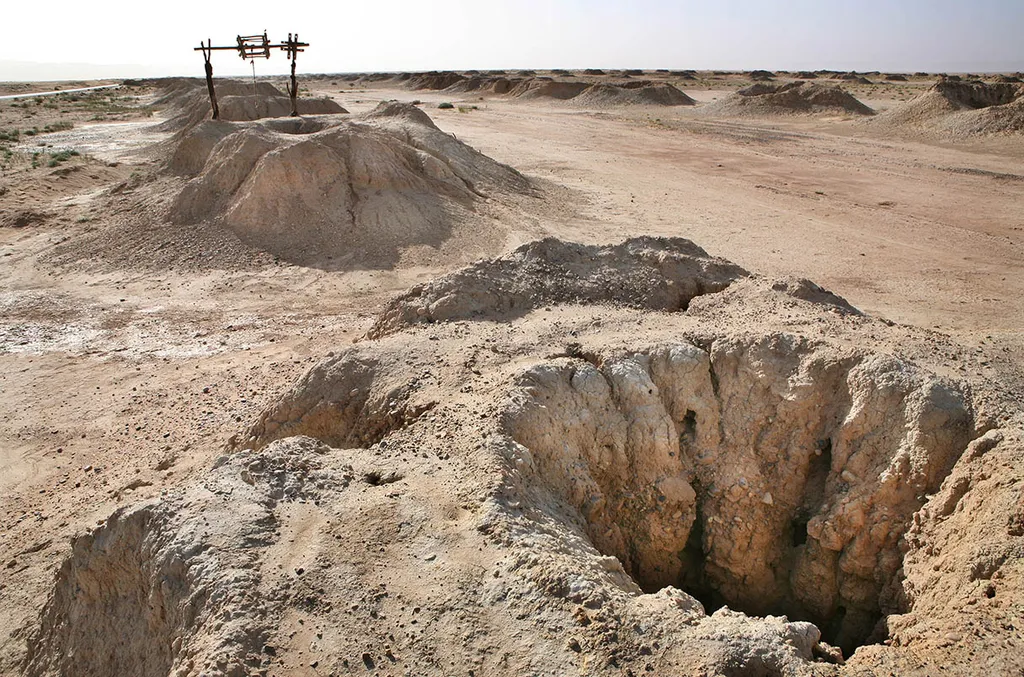In the arid landscapes of the Moroccan High Atlas, where ancient irrigation practices have sustained communities for centuries, a critical water management challenge is unfolding. A recent study led by H. Bouimouass of the Center for Remote Sensing Applications (CRSA) at Mohammed VI Polytechnic University (UM6P) sheds light on the intricate dynamics of groundwater recharge in these semiarid mountain-front systems. Published in the journal *Agricultural Water Management* (translated to English as *Water Management for Agriculture*), the research offers vital insights that could reshape water management strategies in similar regions worldwide.
The study focuses on the Haouz aquifer, a crucial water source for the region, and examines how traditional gravity-fed irrigation systems influence groundwater recharge. By analyzing a 20-year dataset of irrigation diversions and remotely sensed evapotranspiration data, Bouimouass and his team uncovered stark spatial disparities in water allocation. “Upstream zones receive disproportionately higher water allocations due to ancestral water rights, sustaining potential recharge in about 90% of months,” Bouimouass explains. “In contrast, midstream and downstream zones consistently face deficits, highlighting the inequities in water distribution.”
The research employed a simplified water balance approach, corrected for groundwater-based evapotranspiration, and validated the findings against recharge estimates from the water table fluctuation (WTF) method. The results revealed a troubling trend: despite occasional recharge events linked to flood years, statistically significant declining trends in recharge were observed across all zones. This decline is attributed to reduced streamflow and intensified groundwater abstraction, underscoring the pressures of climate change and human activity.
Bouimouass emphasizes the urgency of the situation: “Our findings highlight the vulnerability of traditional irrigation systems under climate and human pressures. There is an urgent need for integrated water management strategies that safeguard ancestral irrigation practices while promoting adaptive measures such as managed aquifer recharge and climate-smart agriculture.”
The study’s sensitivity tests showed that neglecting rainfall and changes in storage (ΔS) introduces only modest biases, confirming the dominance of irrigation as the primary recharge driver. The alignment of potential recharge estimates with WTF-derived values further attests to the reliability of the approach.
For the energy sector, the implications are profound. As water scarcity intensifies, the reliability of water sources for energy production, particularly in regions dependent on hydropower or cooling systems for thermal power plants, becomes increasingly uncertain. The research underscores the need for innovative solutions that balance traditional practices with modern water management techniques. By adopting adaptive measures, such as managed aquifer recharge and climate-smart agriculture, the energy sector can mitigate risks and ensure sustainable water use.
Bouimouass’s research not only highlights the challenges but also offers a path forward. “Integrated water management strategies that respect ancestral practices while embracing modern techniques can help sustain both communities and ecosystems,” he notes. As the world grapples with the impacts of climate change, this study serves as a call to action for policymakers, farmers, and energy providers to collaborate on sustainable water management solutions.
In a world where water is a precious and finite resource, the insights from this research are invaluable. By understanding the dynamics of groundwater recharge and the impacts of traditional irrigation practices, we can pave the way for a more resilient and sustainable future.

